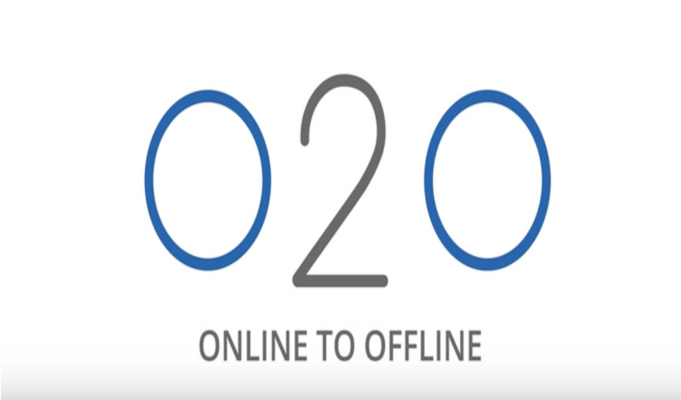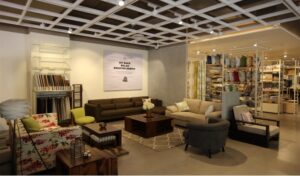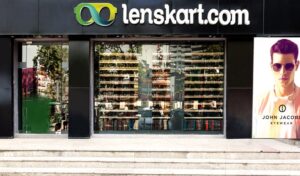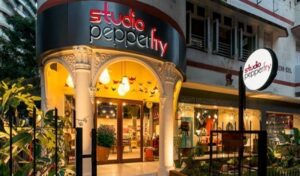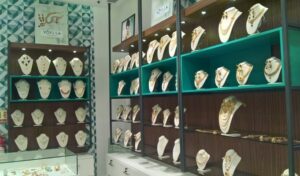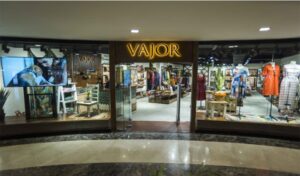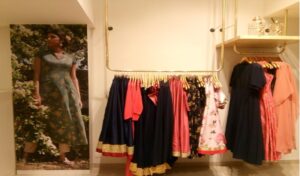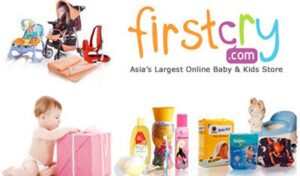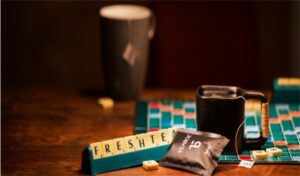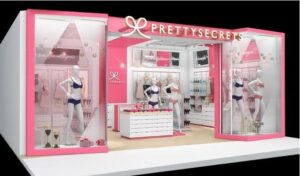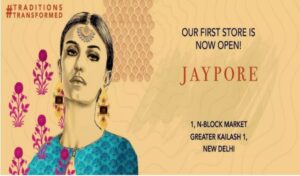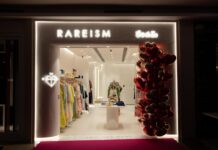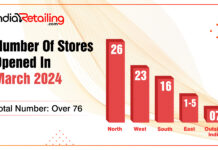While the Internet may have penetrated the heart of India, the hearts of Indians (and their trust) still lies with the physical retailer. In fact, a recent AT Kearney study states that 95 percent of all retail sales are captured by retailers with a brick-and-mortar presence while two-thirds of consumers who purchase online use the store before or after the transaction.
A number of online retailers are branching out into the traditional, turning towards physical retail in order to gain a share of the Indian brick-and-mortar pie, which is estimated to be US$ 28 trillion by 2019.
Going Offline
Roughly 70 percent shoppers research online before they hit a physical store, and 1 out of every 4 consumers pulls out their mobile phone while in a store to research the products they see in store. In contrast, regardless of how convenient online shopping is, consumers still like to see, touch and feel products before purchasing them. Offline retail serves to give a consumer instant gratification, and a level of variety and novelty that they don’t find online.
According to TimeTrade’s State of Retail Report, 85 percent of consumers prefer to shop in physical stores because they like to see, touch and test products in person before buying them. Touching the product with one’s own hands can also help dismiss doubts and convince a person that that’s the right product.
The report also reveals that one third of customers like to receive product advice from sales associates, and a whopping 90 percent of shoppers are likely to buy after receiving help from knowledgeable staff in-store. Despite the popularity of online shopping, the human touch seems to be still good for business.
So, What is O2O?
Online-to-offline commerce is a business strategy that draws potential customers from online channels to make purchases in physical stores. It is a combination of payment model and foot traffic generator for merchants (as well as a “discovery” mechanism for consumers) that creates offline purchases.
Online-to-offline commerce, or O2O, identifies customers in the online space, such as through emails and Internet advertising, and then uses a variety of tools and approaches to entice the customers to leave the online space. This type of strategy incorporates techniques used in online marketing with those used in brick-and-mortar marketing.
The goal of online-to-offline commerce is to create product and service awareness online, allowing potential customers to research different offerings and then tempting them enough to visit the local brick-and-mortar store to make a purchase.
Reverse O2O – The E-Commerce Boom
According to a report by financial services firm Morgan Stanley, online retail in India is estimated to grow over 1,200 percent to $200 billion by 2026, up from $15 billion in 2016. That will be 12 percent of India’s overall retail market.
An unprecedented Internet and mobile phone penetration in the country has led to the number of India’s online shoppers crossing the 9 crore mark this year, a growth of over 8X from 2013 when online shopping began to take root in the country, says a BCG report. E-commerce has become the default shopping mode in big cities, slowing petering down to Tier II & III towns.
Convenience, better experiences including doorstep delivery have been some factors that have led pure-play physical brands to migrate to the online space. Another reason why brands are jumping on the e-commerce bandwagon is the fact that websites and mobile apps have leveled the playing field between small scale and big box retailers.
Shoppers are taking advantage of ease and convenience of shopping and researching by mobile, the personalisation and customisation options online as well as exciting loyalty programs. Take for example the Starbucks’ app, which has combined loyalty and value-add options for consumers in one fell swoop and has managed to garner almost 19 million active monthly users globally, accounting for nearly 30 percent of total rush hour sales.
The Future = Omnichannel & Consumer Experience
Eventually, the route to success for both offline and online companies is customer experience. Shoppers will shape the path brands take in the coming future – offline or online. A returning consumer spells victory for a brand and this is possible only through creation and implementation of experiences, as well as a seamless connection between all channels of trade – traditional or e-commerce.
Click-and-Mortar
Studies have predicted that the future will be all about the union of offline and online commerce. Digital transformation, and to an extent the mobile revolution, have both played a major role in seamlessly connecting two branches of retail which were earlier considered competition to each other. Taking this into account, Internet-based commerce companies are adopting the strategy of expanding offline to reach out to every last customer.
Some Indian companies which have successfully branched out into the offline space are:
1MYNTRA
On March 16, 2017, Myntra launched its first physical retail store for its lifestyle private label, Roadster, in Bengaluru. Myntra set an offline stage for the established online brand, which has contributed over 8 percent to the overall revenue of the platform. Loaded with technology at every step, the store provides a complete brand experience with a mix of technology in fashion and lifestyle.
“Roadster witnessed phenomenal growth at over 80 per cent YoY and is well on its way to achieving a run rate of 1000 crore by FY19. Its entry into the offline segment will further boost its prospects. With this move, customers will receive an exceptional brand experience transformed by technology and a new avenue for shopping,” Ananth Narayanan, CEO Myntra and Jabong was earlier quoted as saying.
“We are offering offline touchpoints through brick-and-mortar experience stores. Our stores will not be typical. Technology will be the major driver in these stores and you will see a clear difference between these stores and other, regular brick-and-mortar stores. We are planning on opening more Roadster stores this year with very engaging technology experiences,” adds Manohar Kamath, Chief, Myntra Fashion Brands.
Myntra reportedly posted a turnover of Rs 2,000 crore in the fiscal year 2016-17 and Roadster played a significant role in garnering this revenue. Roadster, one of Myntra’s largest private brands, will be a $100 million brand by the end of this fiscal year.
The brand already has one Mango store, and they hope to take this number up to 25 over the next three years. Apart from this, Myntra has also tied up with international retail giant Esprit and will open an Esprit store in June in India. Myntra hopes to open 15 Esprit stores in the next three years in the country.
The e-commerce major is also planning to open offline beauty and wellness stores. The company at present sells more than 100 beauty and cosmetics brands, including MAC, Clinique, Bobbi Brown, and Estee Lauder. Myntra plans to sell these products via a chain of multi-brand physical stores.
Going forward, Myntra plans to open multi-brand experience centres, on consolidation and India’s fashion sense. The idea behind opening stores is to give consumers a physical feel of the product and then drive them online, building a great Omnichannel experience.
2URBAN LADDER
Founded in 2012, furniture and decor retailer portal Urban Ladder currently has three stores in Bangalore. The stores – in Domlur, Whitefield, and HSR Layout – have seen over 50,000 walk-ins till date, with an average conversion rate of 35 percent.
The reason behind opening physical stores – according to Urban Ladder’s internal research, 21 percent of customers didn’t get a full sense of the products online. The data also suggested that 45 percent of customers feel that experiencing the products offline validated the price point of the offering.
Based on this data, Urban Ladder set about planning and building multiple experience centers across the country, which will also be the primary hub for new product ranges and collections.
The brand’s business in Bengaluru has grown by 90 percent from the last financial year, with the offline push promising a successful year as far as revenue goes.
The brand is using innovative experience-enhancing technologies at its experience centres – which are approximately 3,500 sq. ft. in size – to make it a virtual extension of its online store. Customers can experience the products in actual house settings through AR and VR gear technology. The idea is to leverage the cross-flow of its online and offline channels to create a fantastic retail experience.
“We have optimized the retail floor through stunning visual merchandising and creative messaging, the store’s retail experience is a delight for customers visiting the location. Seamless integration of technology through QR codes, VR, and AR help customers visualize the look, fit, and feel in the offline store delivering the promise of an infinite catalogue,” says Ashish Goel, CEO & Co-Founder, Urban Ladder.
Urban Ladder, which obtained a single-brand retail license last year, hopes to take the number of its offline stores to 20 pan India by March 2019. The brand hopes to experiment with different formats and category specific stores in different cities.
3LENSKART
In 2014, eyewear brand Lenskart, decided to venture into offline retail, given the increasing number of requests from Indian consumers who wanted to ‘try before they buy’. The store – an access point for consumers – was a success, and the brand went on to open more stores.
Today, Lenskart operates on an Omnichannel retail model and has plans to invest $4 million more to set up more offline stores for one of its premium private labels, John Jacobs. The push towards scaling John Jacobs is in line with company projections, which expect revenue from the priate label to hit Rs 500 crore by FY 2020-21, from the current Rs 100 crore in FY17-18.
Lenskart currently operates five John Jacobs stores in India and is looking to add 20 more for the brand by the end of 2018. Overall, Lenskart aims to expand its offline presence from 300 stores to 600 stores by the end of 2018.
4PEPPERFRY
Furniture and home furnishing giant, Pepperfry – the brainchild of Ambareesh Murty and Ashish Shah, which has a tremendous online presence and popularity – opened its first offline ‘concept store’ in Hyderabad, five years after its launch in 2012. The brand wrapped up FY17 in style, clocking Rs 127.5 crore in total revenue in the fiscal.
The revenue witnessed a growth of 30 percent higher than last year, buoyed through its offline expansion that was initiated last year.
“In the next three to five years leading home players are set to reach the global standards. Pepperfry sees a huge opportunity to lead this growth. Onmichannel is going to be a key growth driver for improving the customer experience. Pepperfry is geared towards scaling the Studio presence and has recently rolled out a franchise model with an aim to build the largest Omni-channel network in the country. We will open 46 studios by March 2018,” Shah told IMAGES Retail Bureau in an interview last year.
In the last two years, the studios have emerged as key touchpoints for consumer engagement and a great marketing channel. They are present at key shopping hotspots across Mumbai, Bengaluru, Delhi, Gurugram, Pune, Ghaziabad, Chennai, and Hyderabad which has resulted in a high number of customer walk-ins at the studios. Customers can experience Pepperfry’s differentiated furniture and home product portfolio, and place orders online. Additionally, they can also seek interiors related advisory from Pepperfry’s design experts.
“We are an online company with studios that are built as an experience centre. We do not have POS at any of our studios,” says Shah, adding, “We have studios at key high-streets across major cities in the country and thus our Studios attract large number of walk-ins. The conversion rates are as high as 20-25 per cent. These are sales that happen after the customer visits our studio to make his/her purchase. We don’t directly attribute these sales directly to our studios as these customers might have seen the product on our e-commerce portal.”
Today, Pepperfry has 23 studios across 11 cities with 20 percent of the overall business driven by offline channel. The firm is looking to open another 25 studios by the end of FY18.
5SHOPCLUES
Established in 2011, ShopClues, the online market owned by Clues Network Pvt. LTD. is all set to launch its first offline store in Lucknow. The brand is set to enter the brick-and-mortar segment after reportedly having raised about $10 million from existing investors.
The new store will feature Shopclues’ private labels and products in categories across fashion, accessories and entry-level smartphones. The new store in Lucknow will cover about 600 square feet area. Post launch, the brand will take stock of ROI and then consider opening more stores going further.
Valued at $1.1 billion, ShopClues claims to have over 6 lakh merchants and 2.8 crore products on its platform, serving over 32,000 pincodes across the country.
6VOYLLA
Fashion jewellery brand Voylla which started as an online player in 2012 and ventured into offline retail in 2015, now has around 250 retail touchpoints in the country. It is currently eyeing a larger play area in Tier I and II cities all over the country.
As part of its retail expansion, Voylla has also added ‘Dare’ outlets that cater to the men’s jewellery and accessories segment. The brand currently has two ‘Dare’ stores in the country in Noida and Cochin.
“Despite the initial rush, e-commerce still needs time to live up to the projections and expectations level of the consumers. For any Omnichannel business, a major chunk of the customer base is still shopping offline, the brick-and-mortar category. This is mainly because of the touch-feel factor which is very important for the buyers and one of the prime reasons why we decided to expand offline,” says Vishwas Shringi, Founder & CEO, Voylla Fashions Pvt. Ltd.
“Our stores are complementary. While an extensive product catalogue gets explored digitally, the trust is built post the touch and feel of offline retail, which helps in pushing the online sales by a good margin,” he adds.
As per Shringi, Voylla is in expansion mode with a target of opening 500 stores soon.
7CARATLANE
Founded by Mithun Sacheti and Srinivasa Gopalan in 2008, CaratLane began as an online portal for selling jewellery. The brand launched its first brick and mortar store in Bangalore at Phoenix Market City in 2014 in order to provide touch and feel experience to the people of Bangaluru. Today, the brand boasts of 38 retail stores across India and is planning to open more in coming months.
In July 2016, Titan purchased 62 percent stake in CaratLane for Rs 357.24 crore
With Titan acquiring a majority stake and stores adding ‘a Tanishq partnership’ as a part of its communication strategy, CaratLane is now banking on the offline model to shore up revenues. The majority of its stores are already profitable, and each store generally breaks even in the second year of operation.
For the next phase growth, CaratLane will focus on Tier-II cities that include Guwahati, Ranchi, Patna and so on. Some of the Tier-II cities that it already has a presence include Chandigarh, Pune, Dehradun, Lucknow, Indore, etc.
“There is an opportunity for online and brick-and-mortar set-up to leverage each other’s strengths. Our stores are very different from the typical Indian jewellery store, which tend to be very large, with a guard and an usher who walks you in. Our stores are designed for the customer who walks into a mall or a duty-free shop. There is no glass and you can walk right up to the products. You can touch, feel and experience the jewellery without any pressure. It’s more inviting than what the retail store environment currently is in India. We display the latest and bestselling collection at our stores and everything is accessible to the consumers. We allow our customers to touch, feel and experience the brand and with such format it only helps our business. Our brick-and-mortar presence complements our online presence rather than compete with it,” says Atul Sinha, Senior Vice President, Marketing, CaratLane.
“The brand CaratLane stands for democratising access to beautiful jewellery. A lot of our customers discover us online and buy at the stores or vice versa. Online & offline definitely complement each other, and we are able to widen our audience base. Our biggest hurdle was to build trust and to be able to get consumers a ‘touch and feel’ experience even though we started as an online jeweller. Over the years, we rolled out various initiatives such as our ‘Try @ Home facility’ that allows customers to shortlist items online and then request for a free trial at their home and the ‘Perfect Look App’ which is the world’s first virtual 3D jewellery try-on app that allows the customers to virtually try on earrings and see how it will actually look on them. More recently we started opening stores making us a truly Omnichannel retailer,” he adds.
By FY-19, CaratLane aims to be an Rs. 500-crore business (in terms of turnover) with a stronger Omnichannel presence (both brick and mortar stores and e-tailing).
8VAJOR
Luxuary fashion and lifestyle brand Vajor is a platform for women’s apparel, footwear and accessories as well as a home decor line comprising range of kitchen and dining, garden, lighting, bath and room and decor merchandise.
The brand opened its first offline store in January 2018. Since then it has opened two more physical stores taking the number to three, within a short span of three months.
“With India contributing to only around 2 percent of the global organised retail, there is a huge untapped market which needs to be catered to. Therefore, to increase the brand’s visibility, we took a decision to go offline,” explains Rajinder Mattoo, Retail Head, Vajor.
The offline stores are designed to serve more as experience centers, which shall enable customers to get a ‘Touch & Feel’ of the product and build their confidence in the brand and product. Meanwhile, the online portal gives the audience a much wider collection as compared to physical stores.
“Both online and offline stores complement each other especially in case of apparel and decor. Offline stores help in building customer faith in the product which triggers the buying decision. Thereafter customer need not visit the stores every time for buying. This can be done online,” he says Mattoo.
9ZIVAME
Online lingerie portal Zivame, founded by Richa Kar, re-strategized its sales policy to include offline stores a couple of years ago.
The company has established 26 brand stores over the last one-and-a-half years and is reportedly planning to set up around 100 stores by FY19-end with an invested of approximately Rs 40 crore.
According to Shaleen Sinha, CEO, Zivame, the company dynamically relocates stores using AI, one reason why customer conversions at the stores are far higher than online.
Zivame claims the conversion rates at stores are 2X higher than online sales with the average order value being at least 1.2X higher. The brand hopes its offline push will help it overturn the dip in revenues it saw last year.
10CLOVIA
Founded in 2012, Clovia is a premium online lingerie retailer. The brand ventured into the offline retail space in 2017, opening its first store in Delhi.
“As a brand we want to be present at every customer touch point and offline was a natural progression for us. The intent was to make product touch-points that can be brand builders and self-sustaining at the same time. While online continues to grow profitably, offline helped us capture a completely complementary user base, while continuing to build the brand,” says Neha Kant, Founder and CRO of Clovia.
“We have six exclusive stores in Delhi-NCR and are looking to expanding to 10 in the next months along with shop-in-shops in leading MBOs in the area,” she adds.
The brand currently gets close to 15 percent of its business from offline channels and the its offline outreach program include shop-in-shops, airport installations as well as international exclusive brand outlets.
Clovia is targeting 50 percent growth from these stores by FY2017-18 and plans to launch 15 more EBOs by 2018 end.
11FABALLEY
In 2016, online fast fashion retailer FabAlley identified its ethnic-fusion range, Indya, for its offline expansion. Indya is FabAlley’s affordable fusion label that pairs Indian heritage fabrics with western cuts and currently contributes to over 20 percent of its overall revenue. FabAlley first partnered with Future Group’s Central Mall in 2016 for their offline expansion, and since then has grown to 65 shop-in-shops across the country, apart from 5 exclusive brand outlets. The standalone stores are approximately 660 sq. ft. in size.
According to Shivani Poddar, Co-founder, FabAlley, the brand’s offline strategy is to expand Indya’s presence across the country creating a touch-and-feel experience for the consumer.
“After being fairly strong from an online point of view, we still felt that there a lot of customers who wanted to kind of touch and then buy the product as oppose to buying online. We felt if we have enough touch and feel points for customers to get familiar with the brand, it is easier for them to transition from online to offline. After reaching a certain stage, we felt the next level of growth will come from ensuring enough outlets offline, so that customers can shop on all channels,” she said in an interview to IMAGES Retail Bureau last year.
FabAlley is also looking to set-up separate shop-in-shops for its brand, Curve. It will invest over Rs 6 crore this financial year on offline expansion and estimates that its offline revenue share will go up to 30 percent of the company’s total revenue by the end of FY19.
12FIRSTCRY
Running high with its offline expansion spree, kids and baby care products retailer, Firstcry – which currently runs 200 brick-and-mortar outlets across India –plans to take this number up to 700 by 2020.
The carpet area of stores range anywhere from 1,000 sq. ft. to 2,000 sq. ft. The stores act as experience centres, successfully tackling the touch-and-feel challenges faced in purchasing online.
Supam Maheshwari, CEO, FirstCry.com feels that while the trend of buying online is increasing exponentially, tradition offline retail still remains the most preferred option for purchase for a large chunk of people.
Firstcry initially started reaching out to its potential customer via the e-commerce route and has recently revamped its loyalty programme in a way that customers could earn points on both online and offline (in-store) purchases and redeem them on either platform.
13TEABOX
Ratan Tata-backed e-commerce startup, Teabox, is experimenting with offline experiential stores in an attempt to establish a deeper customer connects and as part of its Omnichannel strategy.
Teabox is a Bengaluru-based start-up that sells premium tea across the globe through its website. The brand currently operates a physical shop-in-shop (leasing space in another store) in Cinnamon, a high-end destination for designer lifestyle products housed in a bungalow in central Bengaluru.
The firm expects to open four exclusive experiential stores over the next two years, one each in Bengaluru and Mumbai, and two in Delhi-NCR.
14STYLIOR
Stylior, a bespoke men’s clothing brand that offers customised formals, has been in operation since 2016 and has already opened a set of stores in Bengaluru. The firm plans to open six stores by 2018 end, and around 30-40 stores over the next five years.
Their store at Inorbit Mall, Bengaluru, is spread over 700 sq. ft., with a distinctive ambience. It is meticulously planned to give an enhanced tailored and personalised experience to patrons.
With the state of the art décor, customer friendly layouts, minimalistic fittings and attractive merchandise display, Stylior vows to provide their patrons a seamless shopping experience.
15PRETTYSECRETS
Headquartered in Mumbai, PrettySecrets is a fast-growing lingerie brand in India. Created by Karan Behal in 2011, PrettySecrets started out as an offline women’s sleepwear brand. With category diversification in 2012, the brand decided to go purely online and thus launched PrettySecrets.com.
In a span of five years, the portal gained a loyal customer base and also raised multiple rounds of private equity investment. In 2017, with a lot of R&D, inventory and supply chain planning and management and the right franchise partners, the brand changed again – from pure play e-commerce to physical stores to provide their customers with a seamless shopping experience.
It opened its first two exclusive brand outlets in Mumbai.
“Lingerie essentially requires touch and feel, and offline stores are the only relevant platform to create a wonderful customer experience. Since the intimate nature of the category requires a specific sales environment and sadly the unorganised market could not provide the right platform, we then started with two exclusive brand outlets in Mumbai in April 2017. This helps provide consumers the experience that online shopping cannot, despite the best of technology. On the other hand, using customer data from our online source helps us give shoppers a more customised experience,” says Karan Behal, Founder & CEO, PrettySecrets.
Today the brand has a current standing of 21 stores across 14 cities in the country, where 19 of these 21 stores are owned by franchisees. It has plans to expand by franchising 30 EBOs across India this year and an additional 100 by 2018 and 300 by 2019. The brand believes in staying ahead of the game by adopting the latest technology.
“We wanted to redefine traditional lingerie shopping experience by merging online and offline experiences, wherein we use our online database for strategy formulation. Apart from this, we also collect and use data from our stores walk-ins,” Behal explains.
16JAYPORE
Founded in 2012 by Puneet Chawla and Shilpa Sharma, Jaypore’s products include home decor, accessories, jewelry, apparel, gifts, vintage items and more. The brand focuses on products with unique, high-quality craftsmanship, unmistakably local designs that feel at home anywhere in the world.
Building an emotional connect with its target audience resulted in creating a unique value proposition for the brand and led to the opening of its first offline store in Delhi in February 2018.
“Following our website, we first ventured offline with a series of transitory pop-up exhibits, called the Jaypore Open House, where we brought a representation of our collections for limited time showcases across Tier I & II cities in India. This was a sort of market dipstick to gauge the consumer and market response to us going offline and going by the highly favorable response, we then decided to open permanent offline stores,” says Puneet Chawla, Co-founder, Jaypore.
“Following an immensely rewarding journey online, we thought that this is the right time for us to bring our story offline. We understood that a physical store will help us in reaching more customers, especially those who may be wary of shopping online. It’s also for customers who want instant gratification and would want to walk out of a store with the products in hand,” he adds.
The brand aims to open in between four to eight stores across the four Indian metro cities with at least a store in each of them by the end of 2018.
“We have long felt that a majority of our audience is highly discerning in what and how they consume and engage with us – especially when it comes to buying the kind of merchandise that we retail, where they prefer to physically touch and feel, try and then buy. And so, we decided to venture offline and bridge the gap between what you see online and how it feels in person, creating tactile experiences for our customers who value one-on-one, personal touchpoints with the brand,” he further states.
Jaypore stores aim to bring together the physical and digital world with in-store tablets and digital screens that facilitate browsers with detailed information on all customers see in the store as well as provide options for similar items online, style guides, tips and a quick access to the entire Jaypore universe while in store.
The store measures about approximately 3,000 sq.ft. and is company-owned. In the past, the brand has also worked in the pop-up format. For now, they are avoiding the franchise route since they want to control the entire experience of shopping at a store.
“We are hopeful for a steady growth in our offline market. Based on the customer response so far for our first store, we are hopeful of our offline revenue share to grow up to 25-30 percent by the end of the fiscal year,” says Chawla.
17FROM CLICKS TO BRICKS
Globally, the O2O trends has witnessed many more cases in comparison to India. Pure play e-commerce retailers are driving incremental sales by allowing multi-channel shopping, in the hope that shoppers using more than one channel will spend more on their brand. The other upsides are repeat purchases, increased average order value and interacting with the brand in person. Some brands which have successfully included traditional retail in their repertoire of sale channels are:
Amazon: In 2015, Amazon opened its first physical bookstore in Seattle featuring a tiny sampling of books available on the website. The brand eventually plans to roll out 300 to 400 bookstores around the country as well as in Germany. In 2017, Amazon acquired Whole Foods Market – a high-end supermarket with over 400 stores – for $13.4 billion, which vastly increased Amazon’s presence as a brick-and-mortar retailer. In January 2018, Amazon in its bid to explore the offline space further, introduced a new kind of physical store concept called ‘Amazon Go’.
Alibaba: Chinese e-commerce retail giant Alibaba has been showing interest in brick-and-mortar retail for years now, with the company already investing an estimated $8 billion in physical stores in the last two years. Alibaba acquired department store chain Intime for around $2.6 billion earlier this year. Additionally, Alibaba has introduced the company-owned Hema supermarkets since 2015, as a part of its ‘new retail’ vision. At these supermarkets, customers can shop, dine, order groceries for delivery from their smartphones, scan product information (including price) from their smartphones and make payments using Alipay. With the Cainao delivery and logistics business under its belt, Alibaba is in a strong position to dominate the online-and-offline retail and grocery market segments in China.
Bonobos: Launched in 2007, Bonobos is a portal that sells well fitted men’s trousers and pants. In fact, the brand was viewed as one of the leading e-commerce pioneer, based on its unique online-only sales model and early use of social media marketing. The popularity of the brand pushed the company to open full service physical stores in Boston in 2011. Bonobos currently operates over 24 storefronts and the brand aims to open 100 by 2020.
Boll & Branch: Boll & Branch now belongs to a group of e-commerce, direct-to-consumer brands that have opened their own brick-and-mortar stores in the past year. In April 2018, the brand, which started out as an e-commerce retailer, decided to extend to brick and mortar, allowing customers to touch and feel their sheet options before making a purchase. While originally the stores were meant to be experiential only, the owners realised that many customers were seeking instant gratification in taking home their sheets, blankets, or towels that same day. Since Boll & Branch was originally processing orders on an e-commerce platform only, this shift led to resolving pain points in tracking inventory, supply chain management, and providing the best customer experience possible. Their stores are a marriage of old-world shopping with new technology and concepts. Though the store will have Boll & Branch’s full assortment on display, orders will be placed digitally and arrive, free delivery, to the customer the following business day.
Warby Parker: Founded in 2010 as an e-commerce startup, Warby Parker initially promised cheaper prices for fashionable eyewear based on its direct-to-consumer model. It opened its first physical storefront in Manhattan in 2013 and went on to open eight more stores by 2014 with average sales per square foot of $3,000. The brand now operates 64 storefronts and is headed toward 100 in prime real estate locations. The brand has also tested pop-up shops and stores on wheels to reach customers.
Everlane: Online fashion retailer Everlane has opened two physical stores, each a relatively small 3,000 sq. ft. in New York City’s SoHo neighborhood and San Francisco’s Mission District. The fact that customers want to touch and feel – no matter how much social media promotions the brand does – and also that many customers want to make returns and exchanges in person, were two of the primary reasons for the opening of the brand. Apart from the latest collections, personal stylists help find and fit items for consumers and facilitate returns and exchanges.
Ssense: Online luxury retailer Ssense has built a new brick-and-mortar store around appointments, not inventory. Ssense Montreal, which opened in May 2018 in the company’s home base, doesn’t carry regular stock from any of the 200 brands it sells online. Instead, the store is organized into personal styling rooms, and customers who visit the store’s standalone website are directed to book an appointment. With 24 hours’ notice, customers can request any of the 20,000 items found online to try on in-store with a personal stylist. Items can be sent back, purchased at the store, or sent to an online cart or wishlist.
JustFab: E-commerce apparel retailer and subscription service JustFab opened its first brick-and-mortar store in LA in 2013. Subsidiary Fabletics, which focuses on athletic apparel and was co-founded by actress Kate Hudson, opened its first store in 2015 and currently operates seven stores. Despite facing legal troubles, Fabletics recently asserted plans to open 75 to 100 stores over the next three to five years.
Casper: Mattress start-up Casper has opened its first permanent store in the heart of downtown New York in February 2018, on the outskirts of popular shopping destination SoHo. The direct-to-consumer business, which has been selling its items in Target stores and via its own temporary shops (16 of them), joins a growing list of e-retailers deciding to invest in bricks and mortar to build brand awareness and offer shoppers the opportunity to touch and feel products.
Birchbox: Launched in 2010, as an online- only makeup subscription service, Birchbox offered monthly boxes of curated, sample-sized cosmetics from a variety of brands. In July 2014, it opened a brick-and-mortar store in Manhattan that aimed to let consumer’s test and purchase full-sized products. The next year, it announced plans to open two more stores in 2016; however, the company retrenched in the face of difficulties in 2016, and its store count remains at one.
NastyGal: From its early days as an eBay store launched in 2006, Nasty Gal grew into a large online-based apparel brand. It opened its first store in LA in November 2014, followed by a second Santa Monica location in March 2015.
ModCloth: Founded in 2002, as an online-only retailer of vintage-inspired apparel and accessories. It edged slowly into the brick-and-mortar space, starting with a series of pop-up shops throughout 2015 and 2016 that leveraged a showroom model similar to Bonobos. ModCloth opened its first permanent storefront in Austin, Texas, in 2016, and may open more in the future depending on performance.
Boston Proper: After acquiring the online and catalog business in 2011, the brand decided to bring Boston Proper to the physical space. After initially opening four stores in Florida, the company now has 13 physical locations. Stores in Atlanta and Miami are coming soon.




